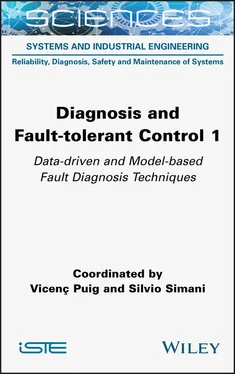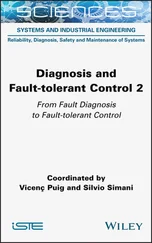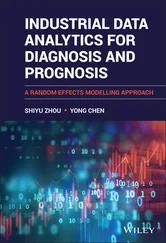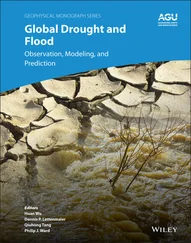The number of applications using nonlinear models is growing, while the trend of using linearized models is diminishing. It seems that analytical redundancy-based methods have their best application areas in mechanical systems where the models of the processes are relatively precise. Most nonlinear processes under investigation belong to the group of thermal and fluid dynamic processes. The field of applications to chemical processes has few developments, but the number of applications is growing. The favorite linear process under investigation is the DC motor. In general, the trend is changing from applications to safety-related processes with many measurements, as in nuclear reactors or aerospace systems, to applications in common technical processes with only a few sensors. For diagnosis, classification and rule-based reasoning methods are the most important, and the use of neural network classification as well as fuzzy logic-based reasoning is growing.
I.9. FDI application report
Because of the many publications and increasing number of applications (IFAC Congress and IFAC Symposia SAFEPROCESS) between 1991 and 2018, it is of interest to show some trends (Patton et al . 1989; Basseville and Nikiforov 1993; Gertler 1998; Chen and Patton 1999; Frank et al . 2000). Therefore, a literature study is briefly presented as follows. Contributions taking into account the applications reported in Table I.1were considered. The type of faults considered is distinguished according to Table I.2. Among all contributions, the fault detection methods were classified as in Table I.3. The change detection and fault classification methods are indicated in Table I.4. The reasoning strategies for fault diagnosis are reported in Table I.5. The contributions considered are summarized in Table I.6. The evaluation has been limited to the fault detection and diagnosis (FDD) of laboratory, pilot and industrial processes.
Table I.1. FDI applications and number of contributions
| Application |
Number of contributions |
| Simulation of real processes |
105 |
| Large-scale pilot processes |
94 |
| Small-scale laboratory processes |
68 |
| Full-scale industrial processes |
98 |
Table I.2. Fault type and number of contributions
| Fault type |
Number of contributions |
| Sensor faults |
129 |
| Actuator faults |
111 |
| Process faults |
123 |
| Control loop or controller faults |
48 |
Table I.3. FDI methods and number of contributions
| Method type |
Number of contributions |
| Observer |
123 |
| Parity space |
74 |
| Parameter estimation |
101 |
| Frequency spectral analysis |
57 |
| Neural networks |
79 |
Table I.4. Residual evaluation methods and number of contributions
| Evaluation method |
Number of contributions |
| Neural networks |
89 |
| Fuzzy logic |
65 |
| Bayes classification |
54 |
| Hypothesis testing |
48 |
Table I.5. Reasoning strategies and number of contributions
| Reasoning strategy |
Number of contributions |
| Rule based |
40 |
| Sign directed graph |
33 |
| Fault symptom tree |
32 |
| Fuzzy logic |
66 |
Table I.6. Applications of model-based fault detection
| FDD |
Number of contributions |
| Milling and grinding processes |
91 |
| Power plants and thermal processes |
106 |
| Fluid dynamic processes |
67 |
| Combustion engine and turbines |
96 |
| Automotive |
68 |
| Inverted pendulum |
63 |
| Miscellaneous |
102 |
| DC motors |
121 |
| Stirred tank reactor |
77 |
| Navigation system |
75 |
| Nuclear process |
50 |
Table I.6shows that among mechanical and electrical processes, DC motor applications are mostly investigated. Parameter estimation and observer-based methods are used in the majority of applications in these kind of processes, followed by parity space and combined methods. Thermal and chemical processes are investigated less frequently.
Table I.3shows that parameter estimation and observer-based methods are used in nearly 70% of all applications considered. Neural networks, parity space and combined methods are applied notably less often.
More than 50% of sensor faults are detected using observer-based methods, while parameter estimation, parity space and combined methods play a less important role. For the detection of actuator faults, observer-based methods are mostly used, followed by parameter estimation and neural network methods.
Parity space and combined methods are rarely applied. In general, there are fewer applications for actuator faults than for sensor or process faults. The detection of process faults is mostly carried out with parameter estimation methods. Nearly 50% of all the applications considered use parameter estimation-based methods for detection of process faults. Observer-based, parity space and neural network-based methods are used less often for this class of faults.
Among all the described processes, linear models have been used much more than nonlinear models. In processes with nonlinear models, observer-based methods are mostly applied, but parity equations and neural networks also play an important role. In processes with linear or linearized models, parameter estimation and observer-based methods are mostly used. Parity space and combined methods are also used in several applications but not to the same extent as observer-based and parameter estimation methods.
Taking into account the system considered, the number of nonlinear process applications using nonlinear models is decreasing. For linear processes, no significant change can be stated. The applications of fault-detection methods for nonlinear processes used mostly observer-based and parameter estimation, more than parity space methods. Also, the use of neural networks and combinations are important.
Concerning the fault diagnosis methods, in recent years, the field of classification approaches, especially with neural networks and fuzzy logic, has steadily been growing. Also, rule-based reasoning methods are increasingly being based on fault diagnosis. A growing application of fuzzy rule-based reasoning can be stated. Applications using neural networks for classification are increasing and the trends are analogous to the increasing number of nonlinear process investigations. Nevertheless, the classification of generated residuals seems to remain the most important application area for neural networks.
Читать дальше












